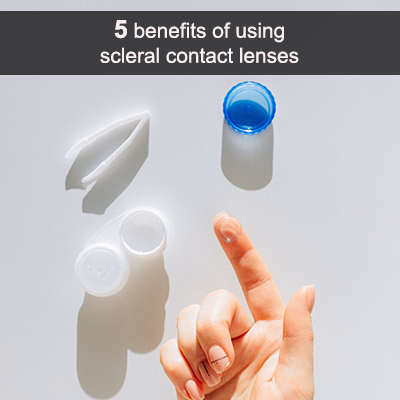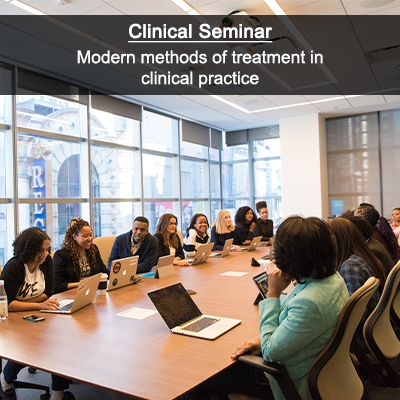Download Package Insert
Before you handle your lenses:
Read these instruction carefully. The following instructions might be altered by your contact lens specialist, accordingly each person’s needs. These instructions are not adequate for soft lens users.
Basic principles:
Always wash your hands thoroughly before you handle contact lenses. The safest soaps are the ones that do not contain lanolin, which could create depositions on the lens surfaces. All traces of soap, parfum, hair spray, cream and lotion must be removed from the user’s hand and the area around the eyes. Have your nails filed and clean. Before inserting the lens, check for any scratches, breakage or missing parts; if you see any of these, do not wear your lenses. Wear the lenses according to the schedule that you contact lens specialist has indicated. Avoid touching the lenses with pointed, sharp objects or nails.Do not use tap water or salive to wet the lens, there is danger of infection.
Lens insertion:
Always insert the same lens first (right or left), to avoid switcing them. Any particular characteristics that distinguish the correct lens for each eye, will be noted to you by your contact lens fitter. Remove the lenses from the cases with gentle movements, without applying pressure on them. In necessary apply one or two drops of wetting solution or artificial tears in the inner side of the lens. Balence the lens on your index. Pull the lower eyelid down using the middle finger of the same hand. Hold the upper eyelid still with the middle finger of the other hand. Make sure that the fingers pulling the lids are holding them from the eyelid rim. At this point the eye opening is opened enough. Touch the inner surface of the lens to the cornea (trnsparent tissue in front of the iris), remove the index finger and release the eyelids very slowly. If the lens is not on the appropriate position n the cornea, remove it and insert it again.
Lens repositioning:
Occasionally, a lens could be displaced on the conjuctiva/sclera (white part of the eye). The displaced lens could be left on the conjuctiva for some time, since it is not causing irritation or redness and not touching the cornea. Spot the displaced position of the lens, looking in the mirror. It might be usefull to pull the eyelids to find the lens, especially if it is located uned the upper lid. Move the lens to the left or right of the cornea using cirular gentle movements of the eyelids. Block the lens using the edge of the eyelids and rotate the eye under the lens, to position the lens correctly. If nevertheless the lens has not positioned correctly, remove it and insert it again.
Removal:
Method 1:
The safest method of lens removal is suceeded with the tips of the fingers, because the user is not dependent on handling aids. Position the tips of the index fingers on the upper and lower eyelids, touch the lid margins. Press the lid margins towards the eyebal, creating at the same time eye opening wider than the lens diametre. Look straight ahead. Reduce the lid opening to the point that the lid margins touch the lens edges. CLosing the lid further away the lens is lifted from the cornea and will probably stay on the lower finger.
Method 2:
Using the appropriate suctions. Make sure that you touch the lens with the suction and not the eye, at any point. When the suction is stabilized on the lens, slide and pull the lens out. In order to release the lens from the custion, hold the lens gently and slide it sideways. Pulling the lens from the suction aggressively, might cause lens distortion.
Unusual sensation:
If the lens causes unsual sensation following insertion, remove it, clean it, rinse it thorougly and rewet it. Reinsert it on the eye. If the sensation persist, remove it and do not wear it untill an eye specialist has examined your eye and suggest to wear the lenses.
The cleaning, the disinfection and the wetting of the contact lenses are seperate procedures and should follow one another. In the cleaning system that your lens specialist has prescribed to you, there are detailed instructions of use, that must be followed in conjuction with the specialist’s advice.
Cleaning:
The importance of the cleaning procedure is vital. It has to be performed after every use, removing any substances that are accumulated on the lenses during the wearing schedule.
Method:
Plase the lens in your palm, with the concave part facing you.
Place 1 or 2 drops of cleaning solution in the concave part of the lens.
Gently rub the lens with circular movements for about 20 seconds.
Make sure that the solution goes to both lens sides.
Rinse the lens thorougly with saline or disinfecting solution, until there are no cleaning solution residues are present.
Rinse you hands thorougly to avoid solution residues present.
Place the lenses in the cases, making sure that are placed in the correct place (right – left)
Disinfection:
Fill the lens cases with disinfecting solution, with the lenses in, and leave them for the time suggested from the solution manufacturer.
Reweting:
Often the disinfecting solution is also reweting according to the manufacturer’s instructions. Therefore following the disinfecting cycle, the lenses are rewetted and ready for use.
Artificial tears:
Artificial tears are used during thelens wear, before or after according the the tears manufacturer’s instructions and the lens specialist’s prescription.
Basic rules you should always remember:
Follow the manufacturer’s user instructions of the cleaning, disinfecting, reweting solutions and artificial tears.
Do not shorten the procedures because the is the possibility of not cleanign the lenses adequately.
Do not change cleanign system without your lens specialist’s recommendation.
Store the solutions according to the manufacturer’s instructions.
Do not use additional eye drops unless the lens specialist has indicated to do so.
Make sure that the lenses are not at the edge of the lens case before closing, to avoid damage.
Normal reactions for first time users:
Vision flactuations due to increased tear presense.
Lens edge sensation by the eyelid for a few days.
Mild light sensibilization. If persists, consult your lens specialist.
Mild fatigue following prolonged near tasks.
Feeling of dryness in enviroments with heavy air conditioning or smoke.
Always consult your lens specialist for any symptoms that are not normal according to his instructions.





